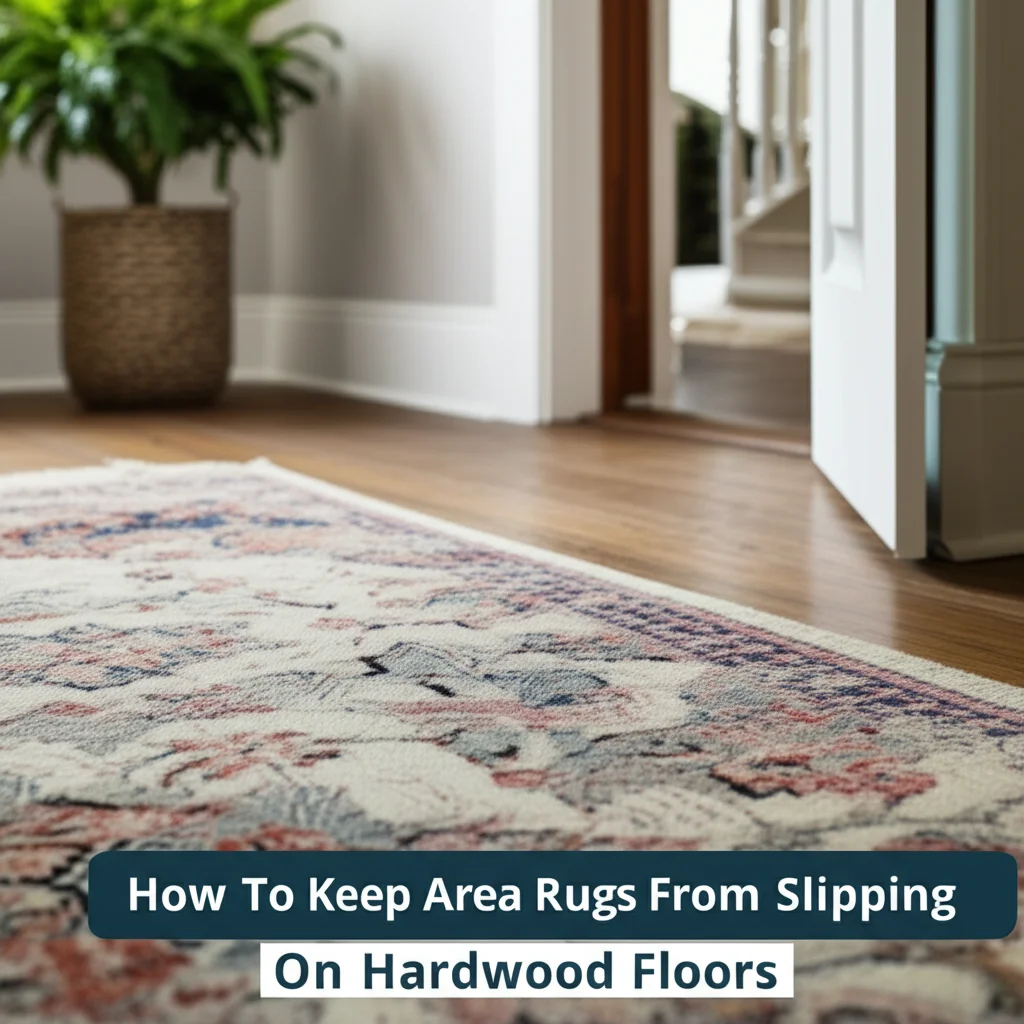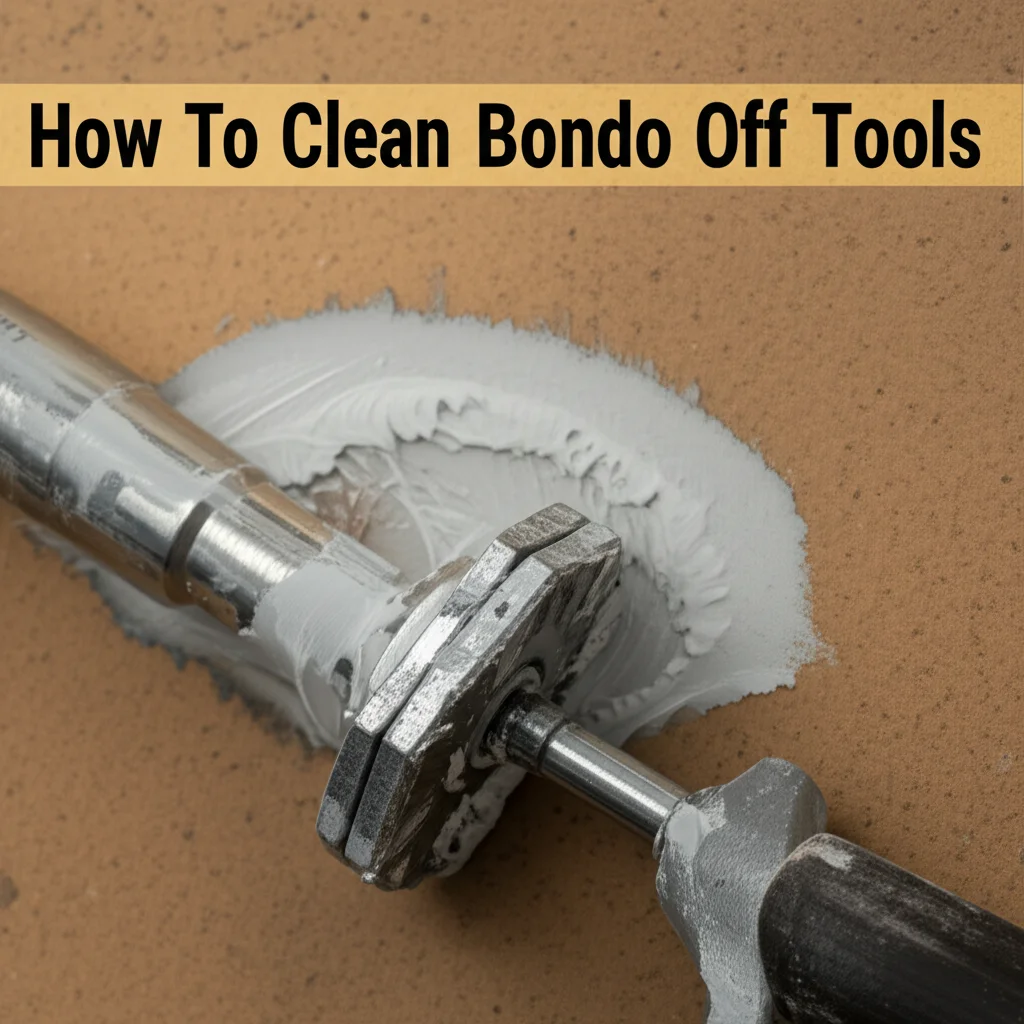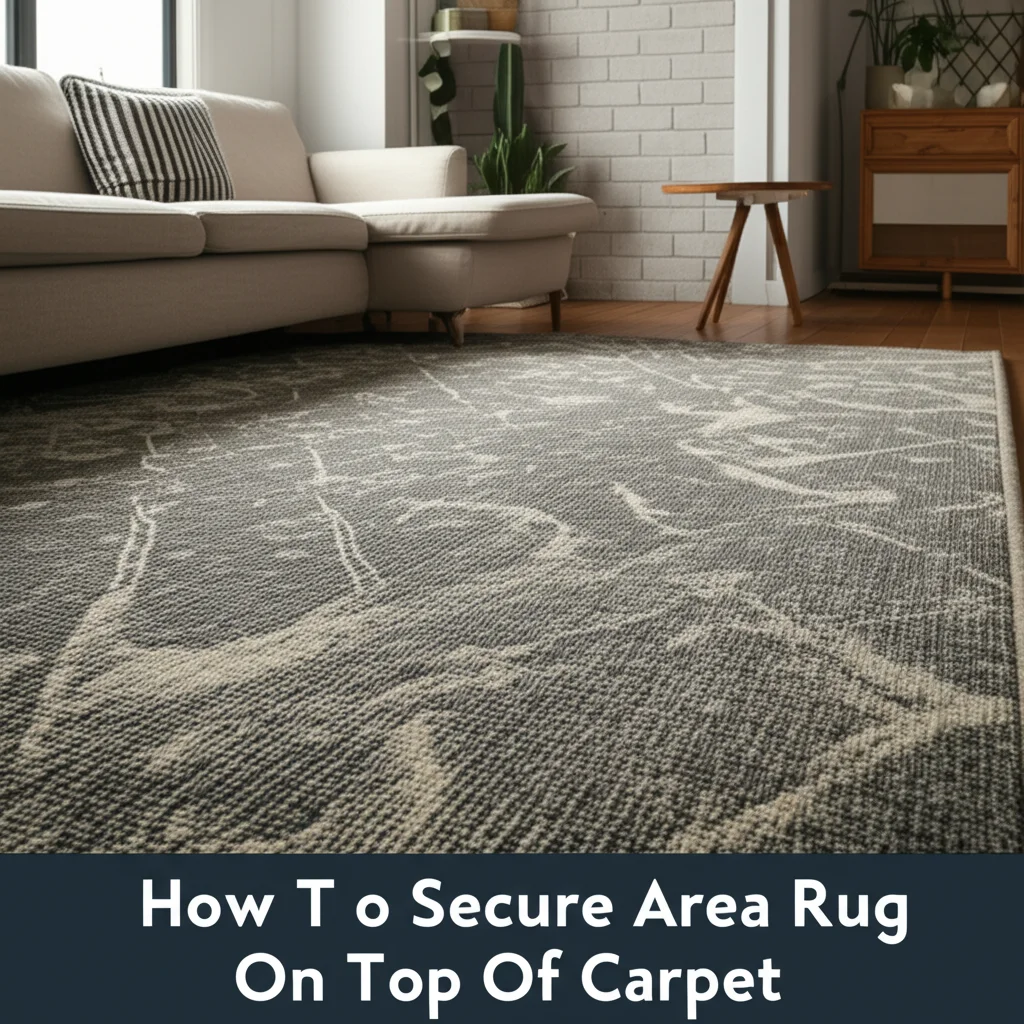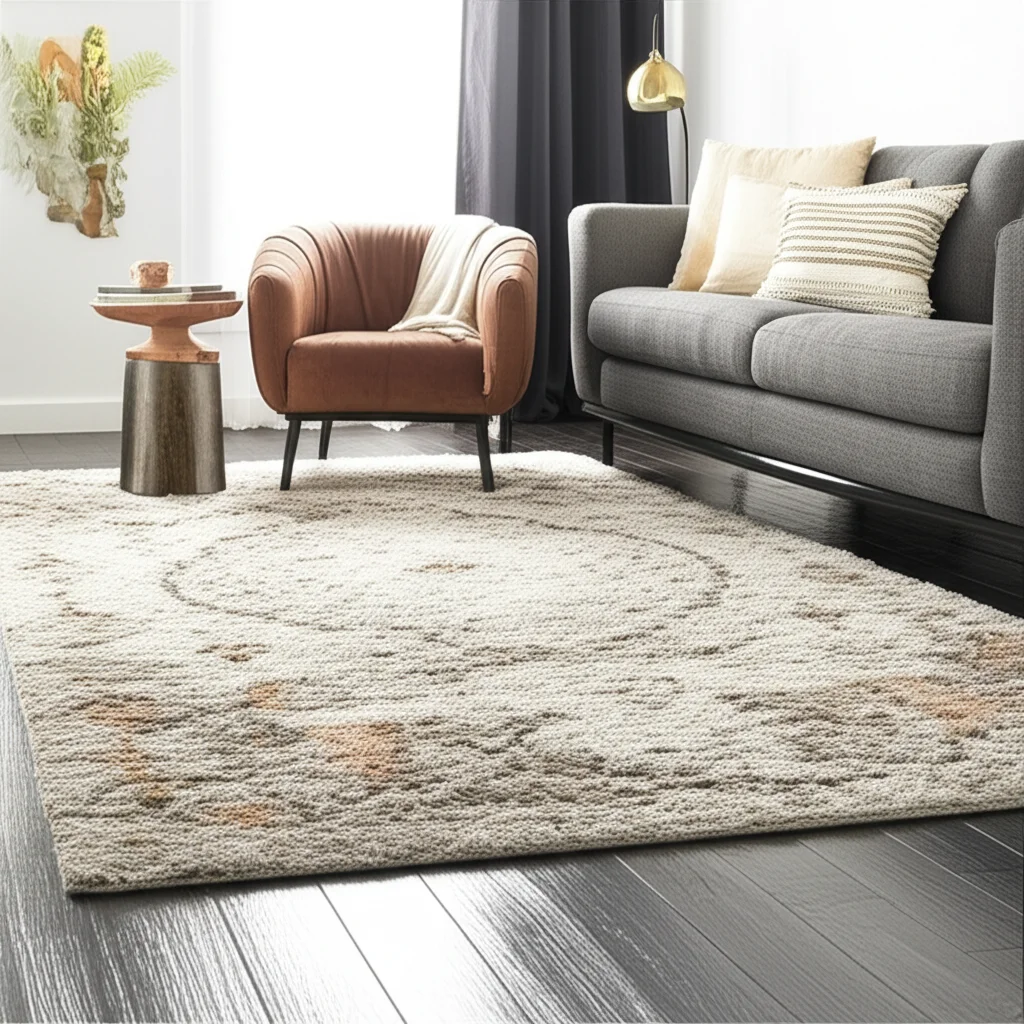· Todd Martin · Home Improvement · 12 min read
How To Keep Rugs From Slipping On Tile
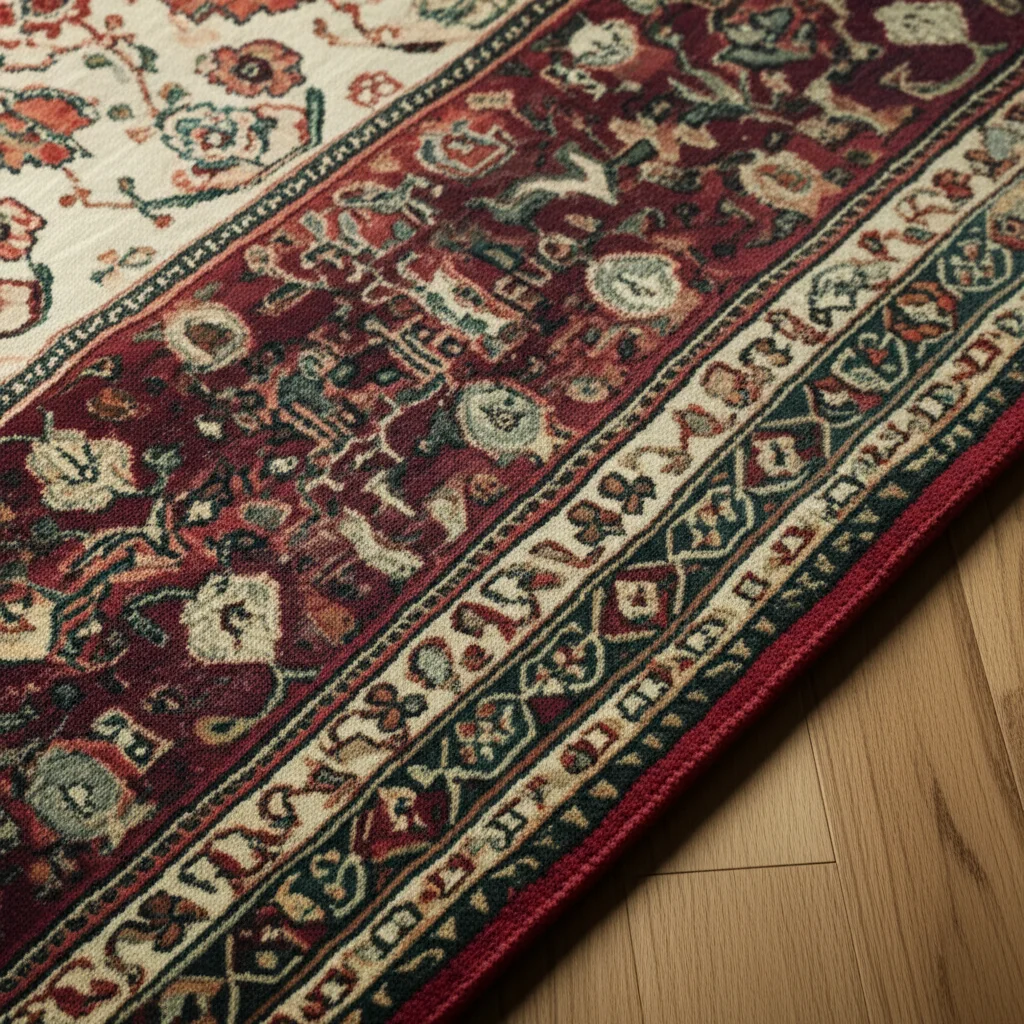
To keep rugs from slipping on tile, use a rug pad made from PVC, natural rubber, or felt. Rug pads provide an anti-slip grip that anchors the rug down without damaging the floor.
Additionally, you can use a rug with non-slip backing, apply silicone caulk, place heavy furniture on top of the rug, or use a rug gripper such as sticky tape, Velcro strips, or adhesive spray. These methods will help keep your rugs in place and prevent any mishaps or accidents on slippery tile floors.
Diy Methods To Prevent Rug Slipping
Prevent rug slipping on tile with these DIY methods: Use a rug pad made from PVC, natural rubber, or felt underneath your rug. Apply carpet tape for added security. Avoid mishaps and protect your floors with these easy solutions.
Non-slip Backing Rugs
Use rugs with non-slip backing to prevent slipping on tile floors. These rugs come with a special backing that provides traction.
Using Rug Grippers
Rug grippers are adhesive pads that stick to the underside of the rug, preventing it from shifting on tile surfaces.
Here’s a quick guide:
Clean and Dry: Ensure both the underside of your rug and the tile floor are clean and completely dry.
Choose the Right Gripper: Select the gripper type based on your rug’s size and material.
Apply the Grippers: Carefully follow the instructions on the rug gripper packaging for proper application.
Position the Rug: With the grippers now attached, place your rug in the desired position and press firmly to secure it to the floor.
Benefits of Using Rug Grippers
Enhanced Safety: Reduce the risk of trips and falls caused by slipping rugs.
Floor Protection: Prevent rug-induced scratches on your beautiful tile floors.
Convenience: Easy to install and, in most cases, they’re removable and reusable.
Affordability: Rug grippers offer a cost-effective solution for slip prevention.
Tips for Effective Rug Gripper Use
Replace When Worn: If grippers lose their stickiness, it’s time to replace them.
Use More for Larger Rugs: Heavier rugs may require multiple grippers or a rug pad for optimal security.
Suitable for All Tile Types: Rug grippers can work on a variety of tile materials.
Applying Silicone Caulk
Apply silicone caulk in lines or dots on the back of the rug to create a grippy surface that adheres to the tile, keeping the rug in place.
Why Do Rugs Slip on Tile?
Tile floors are incredibly smooth, which reduces friction against the back of the rug. This reduced friction allows your rug to bunch, slide, and cause potential accidents with everyday movement.
Benefits of Using Silicone Caulk
Cost-effective: A tube of caulk is an affordable solution.
Easy to apply: Requires no special skills or tools.
Long-lasting: With proper application, caulk can provide stability for years.
Versatile: Works on various rug types.
Materials You’ll Need:
Clear silicone caulk (waterproof is ideal)
Caulk gun
Putty knife
Rubbing alcohol (for cleanup)
Paper towels
Step-by-Step Instructions:
Clean the rug’s underside: Remove debris and ensure the surface is dry.
Flip the rug: Place the rug upside down on a flat surface.
Apply caulk: Load the caulk gun. Draw lines of caulk along the back of the rug, spacing them 4-6 inches apart. You can also add dots for extra grip.
Spread the caulk: Using a putty knife, gently spread the caulk lines into thin, flat strips for even adhesion.
Dry completely: Let the caulk dry for at least 24 hours, ensuring it’s not tacky before turning the rug over.
Place the rug: Now, you can safely put the rug back in its intended location.
Important Considerations
Ventilation: Apply in a well-ventilated area as caulk has a strong initial odor.
Floor protection: Place a drop cloth below the rug to catch stray drippings.
Pre-test: If concerned about your rug’s backing or potential reactions, test a small hidden area with the caulk first.
Commercial Solutions
When it comes to keeping rugs from slipping on tile, commercial solutions provide effective methods to prevent accidents and keep your floors safe.
There are several rug tape and rug pad gripper products available in the market that can help secure your rugs in place and protect your tile flooring.
Rug Tape
Rug tape, also known as carpet tape, is a double-sided adhesive tape specifically designed to keep rugs in place on hard surfaces such as tile floors. The tape is easy to apply and provides a strong grip between the rug and the floor. It is important to choose a rug tape that is safe for use on tile and does not leave a sticky residue when removed.
How to Apply Rug Tape
Applying rug tape is incredibly straightforward:
Clean and Prepare: Thoroughly clean and dry the underside of your rug and the tile floor where you plan to place it.
Cut Strips: Cut the rug tape into strips that suit the size of your rug. Avoid making the strips too long, as they might be challenging to remove later.
Apply to Rug: Peel one side of the backing paper off the tape and attach it to the underside of your rug. Position the strips around the perimeter and consider adding some crosswise through the center for large rugs.
Secure to Floor: Remove the remaining backing paper and carefully position the rug onto your tile floor. Press firmly around the tape to ensure a strong adhesion.
Tips for Using Rug Tape
Test a small area: Before applying the tape to the entire rug, test a small, inconspicuous area to ensure the tape won’t leave residue on either your rug or your tile floor.
Replace regularly: Over time, rug tape will lose its grip. To maintain safety and stability, replace the tape periodically.
Consider a rug pad: While rug tape can be highly effective, using a rug pad in conjunction with rug tape offers extra cushioning, noise reduction, and protection for both your floor and your rug.
Rug Pad Gripper Products
Rug pad gripper products are specially engineered mats or pads that are placed under rugs to prevent slipping and provide cushioning.
These products often feature a non-slip bottom surface to firmly adhere to the tile flooring, while the top surface effectively grips the rug, keeping it in place.
When selecting a rug pad gripper, consider the material and thickness to ensure it suits your specific rug and flooring type. Some popular materials for rug pad grippers include PVC, natural rubber, and felt.
Benefits Of Using Rug Pads
Prevent rug slipping on tile with rug pads, offering an anti-slip grip to securely anchor rugs without harming floors. Using materials like PVC, natural rubber, or felt, rug pads keep rugs in place reliably and effectively. Choose the right rug pad for tile floors to avoid accidents and protect your flooring.
Prevent Floor Damage
Using rug pads can help prevent floor damage caused by rugs slipping on tile. When rugs slide across the floor, they can create friction, causing scratches and scuffs on the surface of the tile. By placing a rug pad underneath the rug, you provide a protective barrier that prevents direct contact between the rug and the floor.
This helps to preserve the tile’s finish and keep it looking pristine for longer. Additionally, rug pads made of materials such as felt or natural rubber offer cushioning, which helps to absorb the impact of foot traffic and reduce the risk of damage to the tile.
Enhance Safety
Another benefit of using rug pads on tile floors is enhanced safety. Slippery rugs can be a tripping hazard, especially in high-traffic areas of your home. Rug pads come with anti-slip properties that help to anchor the rug securely in place, preventing any accidental slips or falls.
The grip provided by the rug pad creates a stable surface that keeps the rug flat and prevents it from bunching or moving around. This ensures a safe and stable surface for walking, reducing the risk of accidents and injuries.
Extend Rug Longevity
Rug Pads Not Only Protect Your Tile Floor But Also Extend The Longevity Of Your Rug. The Additional Layer Of Cushioning Provided By The Rug Pad Helps To Absorb The Impact Of Foot Traffic, Reducing Wear And Tear On The Rug Fibers.
This Helps To Maintain The Rug’s Quality And Appearance Over Time, Preventing Premature Aging And Damage. Rug Pads Also Help To Alleviate Stress On The Rug’s Backing, Preventing It From Stretching Or Warping.
By Keeping Your Rug Firmly In Place And Providing Cushioning Support, Rug Pads Help To Extend The Lifespan Of Your Rug, Allowing You To Enjoy It For Many Years To Come.
Types Of Rug Pads
Rug pads made from natural rubber are excellent for preventing rugs from slipping on tile. The natural rubber material provides a strong grip and prevents any movement or sliding of the rug on smooth tile surfaces.
Felt rug pads are another great option to keep rugs in place on tile floors. The soft and cushioned texture of felt pads not only helps to prevent slipping but also adds a layer of comfort under the rug.
Using silicone caulk is a DIY hack to create a non-slip surface for your rug on tile. By applying lines of silicone caulk on the back of the rug, you can enhance the grip and stability, keeping the rug securely in place.
Best Practices For Keeping Rugs In Place
Ensuring your rugs stay in place on tile floors is essential to prevent accidents and maintain a neat appearance in your home. Implementing the best practices for keeping rugs secure can make a significant difference in enhancing the safety and aesthetics of your living space.
Placing Heavy Furniture
Strategically position heavy furniture on the edges of the rug
Weight from furniture anchors the rug and prevents slipping
Ensure furniture legs are in contact with the rug for stability
Regular Maintenance
Periodically check the rug’s position and readjust if necessary
Clean the floor underneath the rug to remove dust and debris
Inspect the rug pad for wear and tear and replace when needed
By following these best practices, you can effectively keep your rugs from slipping on tile floors, creating a safer and more visually appealing environment in your home.
How To Choose The Right Rug Pad For Tile Floors
When it comes to placing rugs on tile floors, it’s important to choose the right rug pad to keep them from slipping and sliding. A rug pad not only provides grip and stability but also protects your floors from scratches and damage.
Here are a few factors to consider when selecting the perfect rug pad for your tile surfaces.
Compatibility With Tile Surfaces
First and foremost, ensure that the rug pad is compatible with tile surfaces. Look for a rug pad that is specifically designed for use on hard floors, including tile.
These rug pads usually have an anti-slip grip on one side that offers maximum traction on smooth surfaces like tile, preventing rugs from moving around. Avoid using rug pads that are meant for carpet or rubber-backed rugs, as they may not provide the necessary grip on tile floors.
Durability And Longevity
Durability is another crucial factor to consider when choosing a rug pad for tile floors. Opt for a rug pad that is made of high-quality materials and has a strong construction.
Felt rug pads are popular for use on tile surfaces as they are thick and sturdy, providing a cushioning effect and preventing rugs from slipping. Additionally, felt rug pads are known for their longevity, ensuring that your rug stays securely in place for years to come.
Eco-friendly Options
If you’re environmentally conscious, you might want to consider eco-friendly rug pad options for your tile floors. Look for rug pads that are made from natural materials such as felt or organic rubber.
These eco-friendly rug pads not only offer excellent grip but also contribute to a sustainable environment. They are free from harmful chemicals and emissions, making them safe for both your family and the planet.
By choosing the right rug pad that is compatible with tile surfaces, durable, and eco-friendly, you can ensure that your rugs stay in place on your tile floors, enhancing both the safety and aesthetics of your space.
Frequently Asked Questions
How Do I Keep My Area Rug From Sliding?
To prevent your area rug from sliding, use a rug pad made from PVC, natural rubber, or felt. These pads reliably anchor the rug without damaging the floors. You can also use silicone caulk, heavy furniture, or rug grippers like sticky tape or velcro strips to keep the rug in place.
Do I Need A Rug Pad On Ceramic Tile?
Yes, using a rug pad on ceramic tile is essential to prevent the rug from slipping and protect both the rug and the floor. Make sure to select a rug pad with anti-slip grip suitable for tile flooring.
How Do You Make A Rug Slip Proof?
To make a rug slip-proof, you can use a rug pad made from PVC, natural rubber, or felt. Additionally, you can use a rug gripper, such as sticky tape, velcro strips, or adhesive spray. Another option is to use a rug with non-slip backing or place heavy furniture over the rug.
Does Rug Tape Work?
Yes, rug tape can work on keeping area rugs in place for a fair amount of time, but the adhesive may wear down over time.
Final Words
To prevent your rugs from slipping on tile floors, there are several simple and effective solutions you can try. Using a rug pad with an anti-slip grip is one of the most reliable methods. These pads are made from materials like PVC, natural rubber, or felt and offer excellent protection for both your rug and your flooring.
Alternatively, you can use non-slip backing rugs, silicone caulk, or even place heavy furniture on top of the rug for added stability. Whichever method you choose, you can enjoy slip-free rugs and peace of mind in your home.


